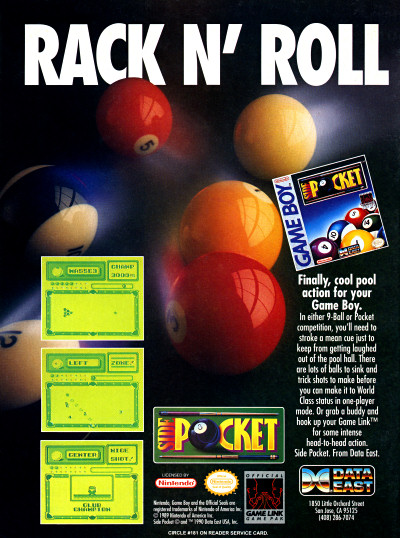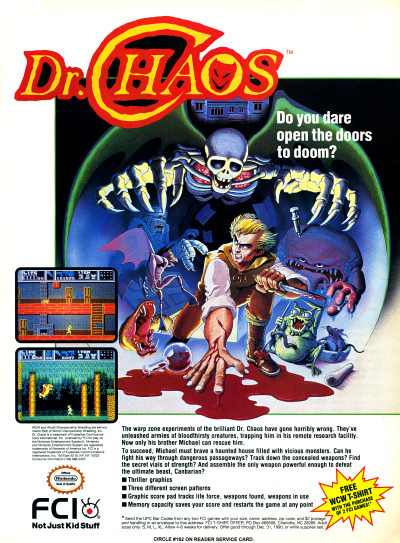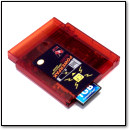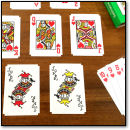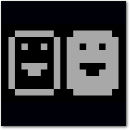[ Retro Scan of the Week ] Tiny Pocket Ultima
Monday, January 7th, 2013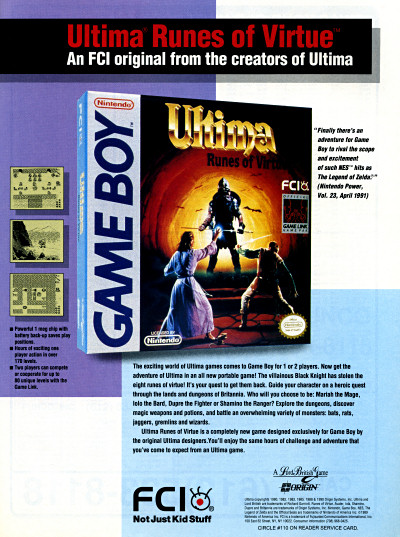 Ultima: Runes of Virtue for the Game Boy
Ultima: Runes of Virtue for the Game Boy
I’m not a huge fan of Ultima: Runes of Virtue for the Game Boy. However, its sequel, Runes of Virtue II on the SNES (which was also released on the Game Boy) is quite an interesting action RPG to me — despite its general clunkiness. It feels sort of like a Zelda title set in the Ultima universe with Ultima VII-style graphics.
Just a small administrative note: I’m moving the Retro GIF of the Week column to Fridays. So expect the next entry in that column this Friday.
Discussion Topic of the Week: If EA made a new core Ultima game today (think Ultima X — and no, not the failed MMO), would you buy it?
[ Retro Scan of the Week ] Dr. Chaos
Monday, October 29th, 2012[ Retro Scan of the Week ] Ultima VI
Monday, October 12th, 2009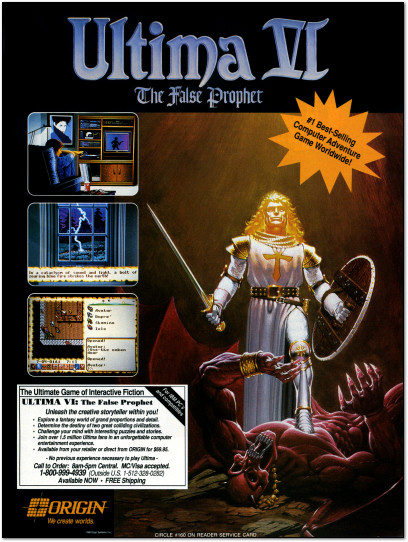 The Avatar: crushing gargoyles like roaches since 1985.
The Avatar: crushing gargoyles like roaches since 1985.
Discussion Topic of the Week: I’ve already asked you what your favorite Ultima game was. What’s your least favorite game in the Ultima series? Which one do you think is the worst?
Great Moments in Shareware: ZZT
Monday, September 3rd, 2007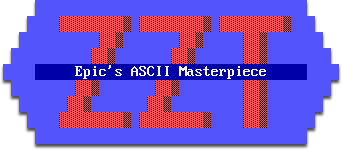
Read any popular game publication these days, and you’ll probably come across ample mention of Epic Games’ Unreal Engine, the 3D powerhouse behind blockbuster first-person shooters like Bioshock and Gears of War. Believe it or not, one of today’s hottest game engines traces its roots back to a 2D text-based game programmed by a University of Maryland college student during the golden age of shareware.
Tim Sweeney founded Potomac Computer Systems in 1991 with the release of ZZT, a graphical ASCII character-based game that ran on a simple object-oriented platform programmed by Sweeney. With an in-game editor, Sweeney created multiple ZZT episodes that he sold to finance the new company. Luckily, Sweeney didn’t limit the in-game editor to himself; it featured prominently on the title screen of the free shareware edition. Much to Sweeney’s surprise, the editor itself soon became the most popular part of ZZT, allowing players to create their own games in the ZZT engine. Potomac changed its name to Epic MegaGames, and a shareware giant was born.




A large community of rabid ZZT fans still thrives thanks to the Internet, where enthusiasts trade nostalgia, user-made games, and the latest attempts to squeeze every last drop out of the ZZT engine through emergent programming techniques. For example, clever world builders have managed to reproduce just about every major 2D game genre — even genres the engine wasn’t designed for — in ZZT‘s editor, albeit in primitive forms. For modern ZZT fans, the game’s fun lies not only in playing the community’s user-created games, but in the challenge of creating new and unexpected things with a simple set of tools and components.
The original shareware package of ZZT only included one game: Town of ZZT, a whimsical adventure created by Sweeney that calls upon a player’s action and puzzle-solving skills. But in the late 1990s, Epic released all of Sweeney’s classic ZZT episodes as freeware, so you’ll find those worlds in the file below as well, including Dungeons of ZZT.
Have fun. Feel free to share your fond ZZT memories (or latest ZZT exploits) with the rest of us.
(Update – 05/25/2009: If you love ZZT, check out this interview I conducted with its creator, Tim Sweeney.)
| ZZT 3.2 | |
| Release Date: | 1991 |
| Author: | Tim Sweeney (Epic MegaGames) |
| Platform: | MS-DOS |
| Runs Best On: | Any 286 PC or faster with MS-DOS |
| Notes: |
Includes full Town, City, Caves, and Dungeons of ZZT episodes. ZZT runs pretty well on modern computers under Windows. You might also want to try running the game under DOSBox. Uses the PC speaker for sound. |
| – Download ZZT 3.2 – (175KB) | |
Great Moments in Shareware: Scorched Earth
Thursday, July 12th, 2007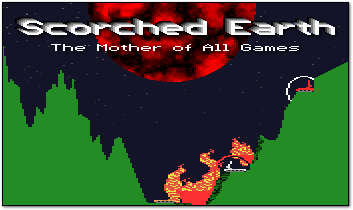
Sixteen years after its humble emergence in the golden age of the BBS, Wendell Hicken’s timeless 1991 artillery simulation remains a hallmark in shareware history. Scorched Earth stands as nothing less than a masterpiece in the field of computer games.
With its numerous gameplay settings, variable computer AI, and an impressive variety of entertaining power-ups, Scorched Earth possesses nearly infinite replay value. It’s also one of the greatest party games ever devised: up to ten players can take turns plotting the explosive demise of their closest friends at the hands of a Nuke, MIRV, or Death’s Head over as many as 1000 rounds. As a testament to the pure strategy of the game, veterans skilled in the ways of Scorch know the best ways to dispatch foes — or merely survive as others duke it out — under any circumstance, rain or shine, springy walls or rubber.




Many of today’s game designers seem envious of Scorch’s ability to consistently entertain for over a decade. Fans of Hicken’s classic have attempted modern remakes of or improvements upon Scorched Earth, but to this day, none has even begun to approach the solid feel, intricate balance, or professional production values of the original. That’s how good it is.
Hicken didn’t invent the artillery game; he perfected it. And as long as our computers run without smoking, we’ll still be playing the original Scorched Earth as good Wendell intended.
| Scorched Earth 1.5 | |
| Release Date: | 1991 (1.0), 1995 (1.5) |
| Author: | Wendell T. Hicken (aka “Sprig”) |
| Platform: | MS-DOS |
| Runs Best On: | Any 286 or 386 PC with 640K+ RAM and a VGA card |
| Notes: |
Amazingly, Scorched Earth runs pretty well on modern computers under Windows. If the game seems too fast, adjust the in-game “Firing Delay” setting (under “Hardware”). You might also want to try running the game under DOSBox. The game uses the PC speaker for sound. |
| – Download Scorched Earth 1.5 – (633KB) | |
